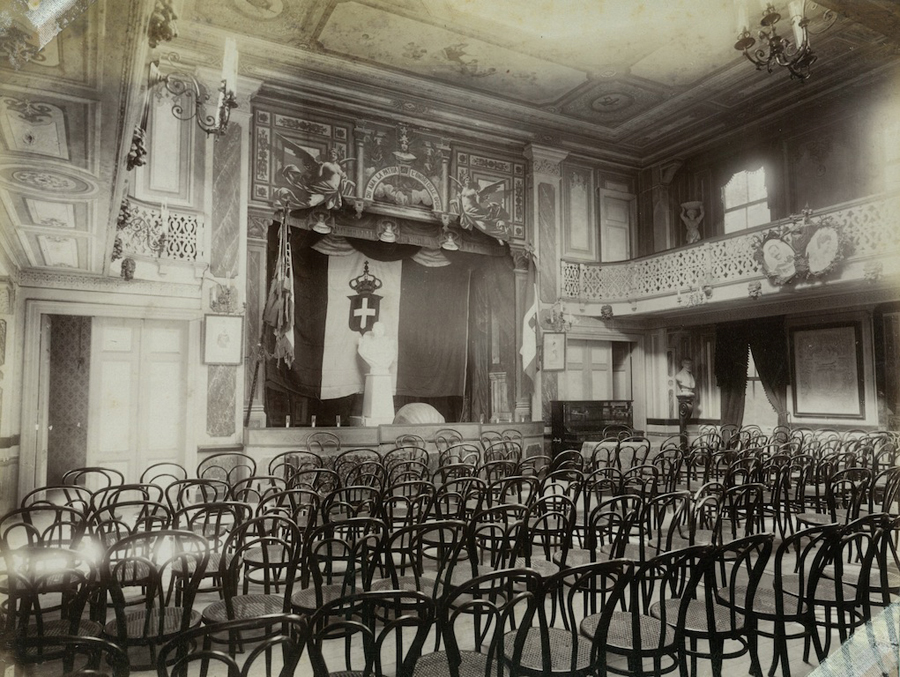
Ephemera
Constantinople Pantomime
A page from the British magazine ‘The Sketch’, 18 February 1903, under the heading ‘The pantomine that the Sultan has stigmatised as improper’ with at least 6 ladies of the Anglo-Levantine community of Constantinople shown in 2 different poses, with the captions: “Six little shop-girls we, bonnie as bonnie can be, Daintily clad and daintily shod; if we don't find husbands, well, that'll be odd.” and the lower image with the caption: “Hist, nigs! The bogie-man is prowling round. - Dick Whittington at Constantinople - see page 194”. There might be a considerable amount of ‘journalistic licence’ in the heading as the Sultan at the time Abdul Hamit II, while being despotic to the general population, left Levantines mostly to their own devices.
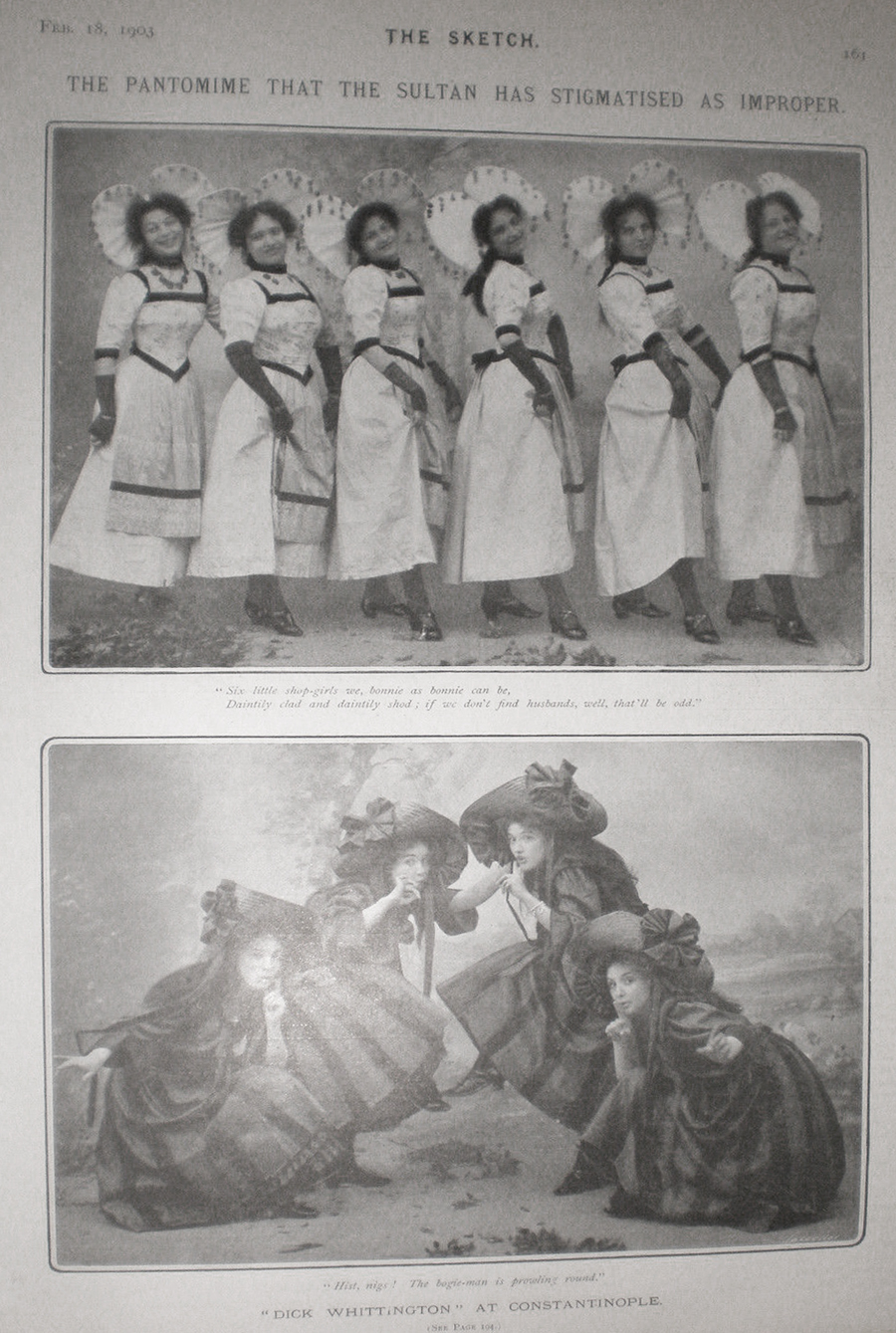
The Sketch was a British illustrated weekly journal, which focused on high society and the aristocracy. It ran for 2,989 issues between 1 February 1893 and 17 June 1959. It was published by the Illustrated London News Company and was primarily a society magazine with regular features on royalty and the aristocracy, theatre, cinema and art studies. It had a high photographic content with many studies of society ladies and their children as well as regular layouts of point to point racing meetings and similar events.
Pantomime is a type of musical comedy stage production, designed for family entertainment. It was developed in England and is still performed throughout the United Kingdom, generally during the Christmas and New Year season and, to a lesser extent, in other English-speaking countries. Modern pantomime includes songs, gags, slapstick comedy and dancing, employs gender-crossing actors, and combines topical humour with a story loosely based on a well-known fairy tale, fable or folk tale. It is a participatory form of theatre, in which the audience is expected to sing along with certain parts of the music and shout out phrases to the performers.

A better quality group photo from the above page: left to right, Edith Hill, Mary Maltass (?), Daisy La Fontaine, Eileen Whittall.
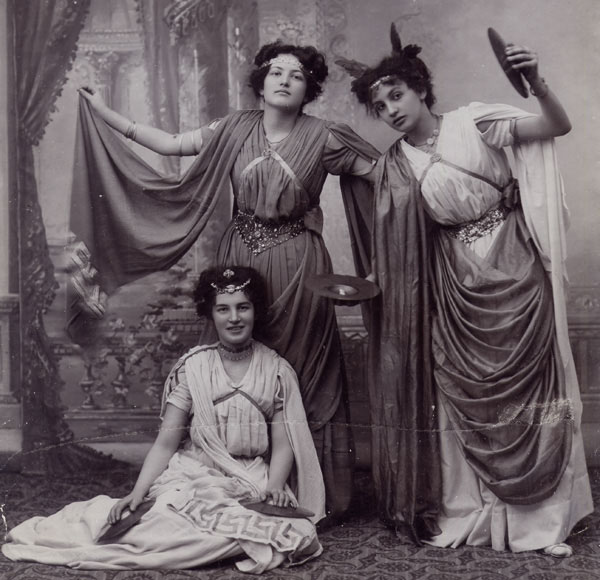
Another episode of the pantomines: (l>r) Daisy La Fontaine, Eilleen Whittall (b.1889, daughter of Edwin Whittall and Adelaide Helen La Fontaine, married Edward Leonard La Fontaine), Edith Hill (b. 1887, daughter of Albert Anderson Hill and Linda Frances Whittall, married John Macmanaway).
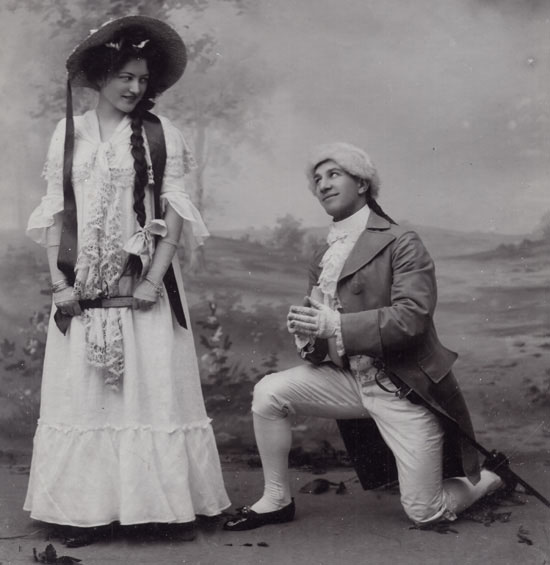
Daisy La Fontaine (1882-1982, daughter of Edward Augustus John La Fontaine and Blanche Magdalen Whittall, married 1905 Charles Goad in Bornova - wedding photo) and unknown - pantomines by Canon Whitehouse done each year around 1905.
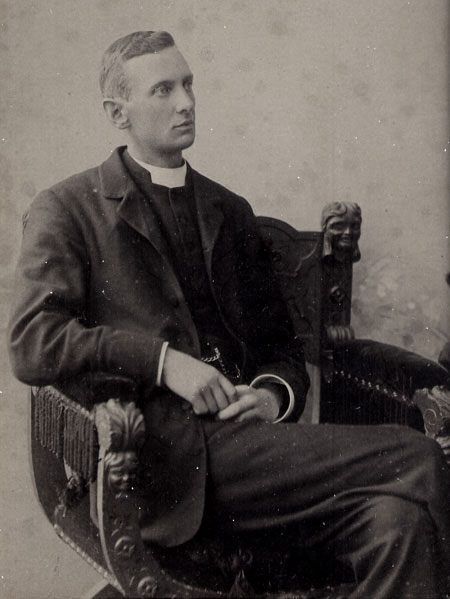
Canon Francis Cowley Whitehouse, the British Chaplain at the time who helped organise these pantomines. After the capitulations were rescinded he could no longer wear his dog collar in public. Shortly after the end of World War I he became tutor to the Crown Prince and Heir Apparent, AbdulMejit II, the last Caliph of Islam, nominally the 37th Head of the Ottoman Imperial House from 1922 to 1924.
It is not known how long these pantomines ran through or their location. What is almost certain is they were an exclusively British affair as for other communities (including other national origin Levantines) this would have been alien and perhaps too informal for their sensibilities.
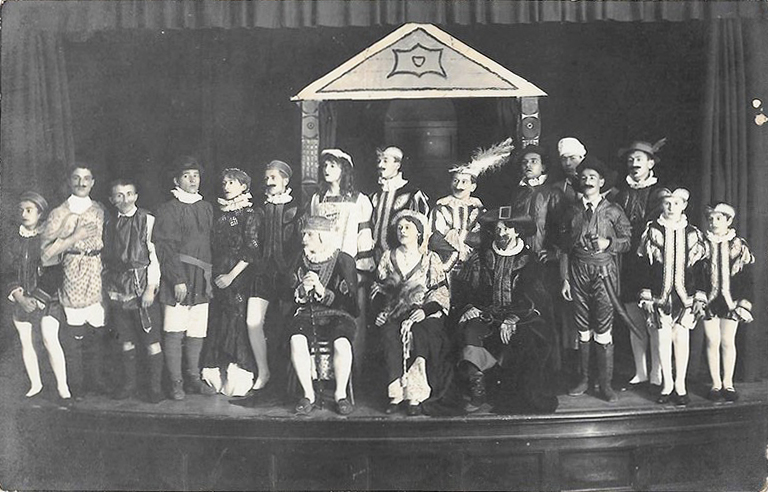
A theatre production cast group photo from a similar period from the Italian community of Constantinople.
